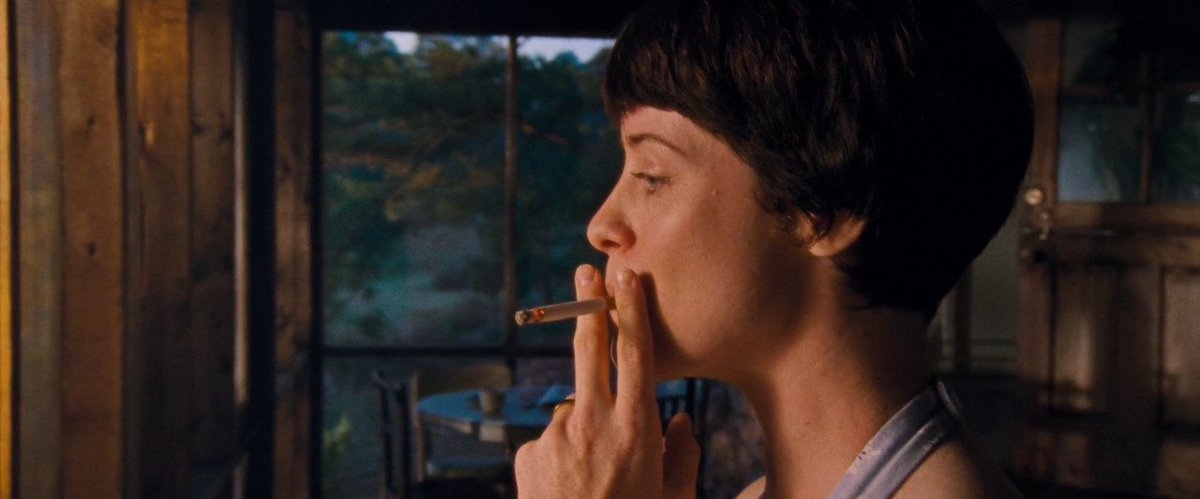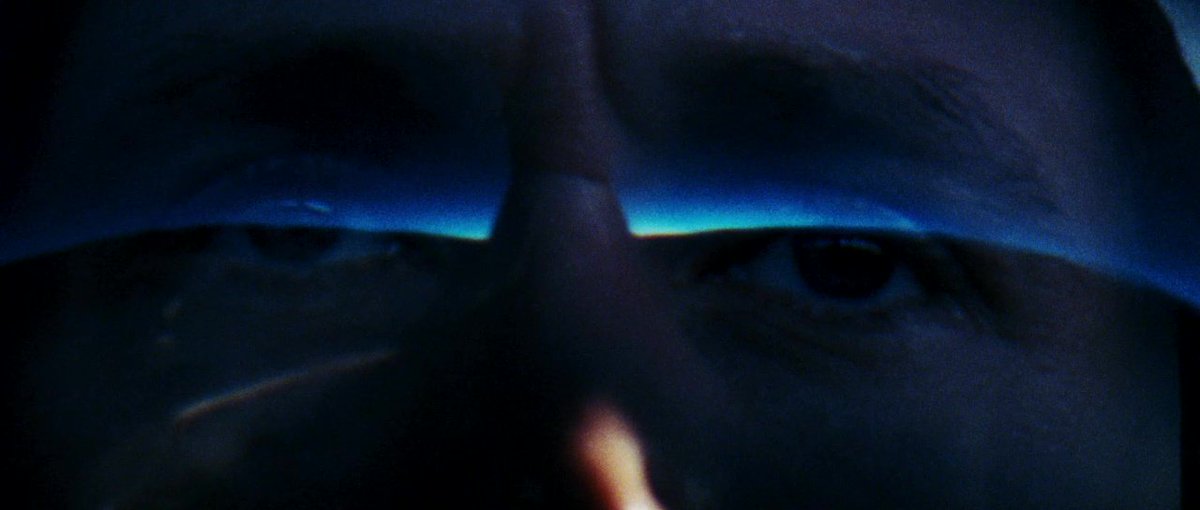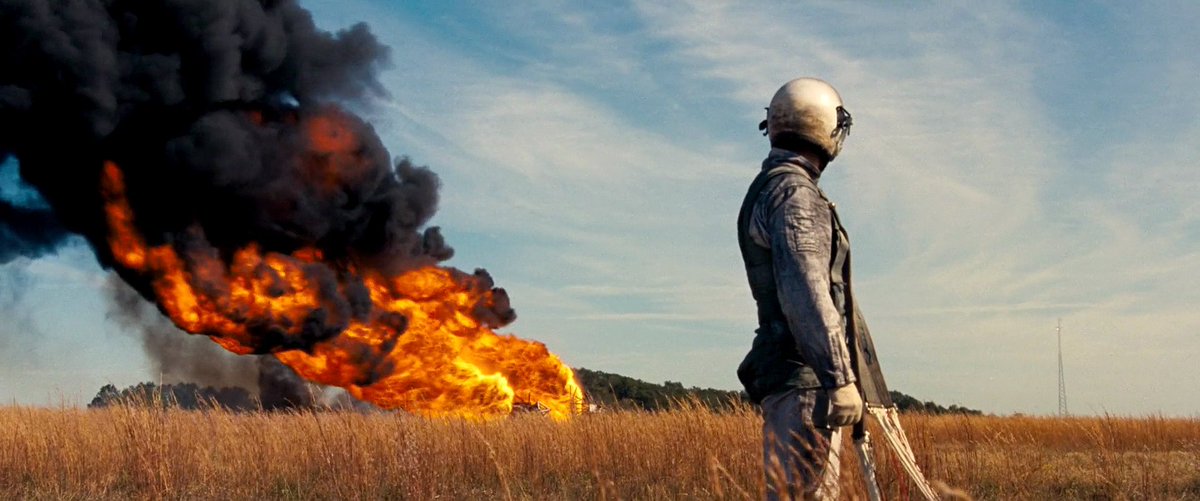Reporting For Duty
It looks like you're new here. If you want to get involved, click one of these buttons!
Quick Links
Categories
The Cinematography of NTTD - Linus Sandgren
We had a similar thread for Hoyte van Hoytema's work in SP. It makes sense to devote an entire thread, so cinematography nerds like me can bask in the glow of Sandgren's work.
He's a very interesting DP. He is mostly known for his grainy 35mm work. He has utilised a lot of handheld work for David O Russell and took a similar veritie style for First Man.
Though, his most acclaimed work is La La Land. That is much more classically composed in terms of framing with elegant and bright lighting. That film has a deliberately idiosyncratic feel.
He's clearly very versatile. However, i think his work with Russell and First Man will be more indicative of the style he will utilise for Bond.







He's a very interesting DP. He is mostly known for his grainy 35mm work. He has utilised a lot of handheld work for David O Russell and took a similar veritie style for First Man.
Though, his most acclaimed work is La La Land. That is much more classically composed in terms of framing with elegant and bright lighting. That film has a deliberately idiosyncratic feel.
He's clearly very versatile. However, i think his work with Russell and First Man will be more indicative of the style he will utilise for Bond.







^ Back to Top
The MI6 Community is unofficial and in no way associated or linked with EON Productions, MGM, Sony Pictures, Activision or Ian Fleming Publications. Any views expressed on this website are of the individual members and do not necessarily reflect those of the Community owners. Any video or images displayed in topics on MI6 Community are embedded by users from third party sites and as such MI6 Community and its owners take no responsibility for this material.
James Bond News • James Bond Articles • James Bond Magazine

Comments
I think his experience working with IMAX film! cameras is one of the reasons (if not the key) why Cary decided to work with Linus on Bond25. There are not so many (few, to tell the truth) cinematographers in Hollywood who has experience working with these cameras. Hoyte probably is the main master, but he is busy working on "Tenet". I think, it was basic idea of Cary to shoot selected scenes on IMAX (+he is fan of film format) and then he searched for cinematographer with experience and Linus was maybe the best variant.
''Sunny Skyfall''
''The spots and Umbrella''' (playing with three spots of gunbarrel & the light and possible intro of the villian. )
''Walk a way from a palm tree''
It's very common. Not something strange at all. All Bond film with Daniel were shot on combinations of cameras.
There are numerous different explanations for this that really only Sandgren could confirm. Sometimes, camera crews have two units on set - while one is shooting the other is being prepped for the next setup if it requires a lens change and/or any modifications. That mostly only applies to TV productions where a compressed schedule is a bigger issue and this method is viewed as being a timesaver.
Single-camera setups offer more flexibility with lighting, but Sandgren's lighting style might nullify that issue and enable him to shoot with two cameras; capture the scene on a wide-prime, then have a longer focal length prime on the second camera (or whatever lens combination he chooses to use, I guess).
However, on the whole, multi-cam set ups aren't unusual at all, especially if shooting in a studio setting. Ridley Scott sets almost always uses three cameras rolling at once, sometimes more. This is simply to have maximum coverage of a scene or to make sure you capture all the little emotions that might be lost if you call "cut" and have to move to another setup and have the actor do it all again. Michael Mann had Dante Spinotti shoot the Heat café scene with three cameras rolling at once, because the scene was so pivotal in the film and relied so heavily on the actors reactions to each other in that moment.
For Bond 25, you will notice in the promo video that there are two angles on Nomi on the monitor, (a front profile and a side profile) which would lead me to believe that Fukanaga and Sandgren are following a similar approach to Michael Mann in this instance, at least during key scenes.
And of course, almost all action scenes are shot with multi-cam setups for obvious reasons.
Thank you, very helpful.
I've noticed in pretty much every shot set-up and look a the monitors. Sandgren and Fukunaga seem to shoot one in profile and the other being a symmetrical mid-shot. The latter is a little more unusual for this type of movie.
Here's an interview of Sandgren talking about his style. I'm looking so forward to hearing him talk about Bond 25's visual look:
https://www.youtube.com/watch?time_continue=359&v=HNk9TARz3gE
That bit around the 7m mark reassured me we're in for something really special.
Nonetheless, Mr Sandgren has plenty of brilliant material -including a pretty cast and prettier locations.
I believe the trick with Bond photography is an ability to fluctuate in tone. There should be segments (such as Jamaica) that are colourful and 'pop'. But you still want to keep those chilly and menacing tones (perfect for a location such as Norway).
I recently saw the Orlebar Brown video and this photography screams 007.
Another beautiful sun-kissed film I've seen recently is 'The Beach Bum' that has some of the best photography I've seen. If Bond's 25 Jamaica scenes are even close to the shots here, I'd be in awe.
I'd let McQuarrie off the hook tbh as he had a valid reason - you wouldn't expect to strap the heaviest film camera in the world that can only do 3 minute takes to a skydiver :D Those sequences were filmed on Panavision DXL digital rigs. I guess by the same token Deakins is a cheat for what he did on Skyfall :P
Anyway, not being happy with changing ARs is a totally fair thing, and I hear you about Nolan's approach fetishizing action - if I'm gonna be honest, if anything that's even more suitable for a Bond film where everything is built around the cornerstone set pieces! In any case the only reason the AR switching happens is because you can't shoot the whole film in 70mm IMAX - Nolan's really pushing the envelope in trying to get as close as possible. Easy solution for those disliking it - just don't see NTTD in an IMAX cinema.
1.85:1 is actually a really interesting thing because now most new cinemas actually have screens in that specific format to fit all the different aspect ratios that films are coming out in better without having to adjust. Like TVs, modern digital projector sensors are also constant image width as opposed to height - but to fit different ratios on a traditional constant width scope (2.40:1) screen is a lot more difficult. So to use the most image space on a modern cinema screen, 1.85 is the way to go really according to experts in exhibition.
However, this does present a problem for IMAX - a 1.85:1 film on a huge screen like that is way too overwhelming in my opinion. The way IMAX footage is framed - keeping it safe for 2.40:1 crops and with the additional image above and below going into your peripheral vision, works a lot better for that sort of immense screen size and field of view.
Not sure if any of you have ever seen these before. Colour corrections are done to certain scenes in the Craig films. This Spectre scene particularly highlights how the murky colour grading hurt certain scenes.
I didn't know we had this thread, so I'll be following it even though I don't understand the technical terms used. ;)
+2
It might not be entirely to my taste, but I can appreciate the artistic license involved in creating it and the creative intent behind it enough to also not be a fan of the "colour corrected" version.
Yes, but is it supposed to be the same mood throughout the entire film? Cause that was the end effect and, IMO, it worked against the point. Plus it was a blatant disrespect to all the production effort put into those wonderfully coloured costumes. IMO, of course. It made all look bland. The entire film was drenched in oneiric feel, but that oneiric feel some get just before they wake up and realised they've wet their pants.
+3.
Are we seriously using this thread to re-litigate Hoyte's work on Spectre ?! Personally, I adore the visuals. They were very evocative of the whiskey-hued work of Gordon Willis on The Godfather. I went weak at the knees watching the scene in Spectre where Lucia goes home or Madeleine stands in the L'Americain hotel. Stunning work.
We are here to speak about Linus and Cary. It's clear from IG that these two have been working very very very closely on the visuals.
I think the pair have clearly been chasing sunsets and sunrises. check out this picture form Cary's IG referring to the camera crew as the 'Dawn Patrol':
The best visual comparator for this film will be La La Land which makes extensive use of the 'magic hour':
However, Linus's work on First Man was more grainy and less polished than La La Land. In fact, it was closer to Spectre. I wonder where NTTD will stack up in comparison.......................
Don’t you mean the oh so clever “piss color filter”? ;) Funnily, I remember fans made that same juvenile remark about the color grading of CR. In the trailers you could see how the colors looked naturally before the colors were tweaked for the final cut.